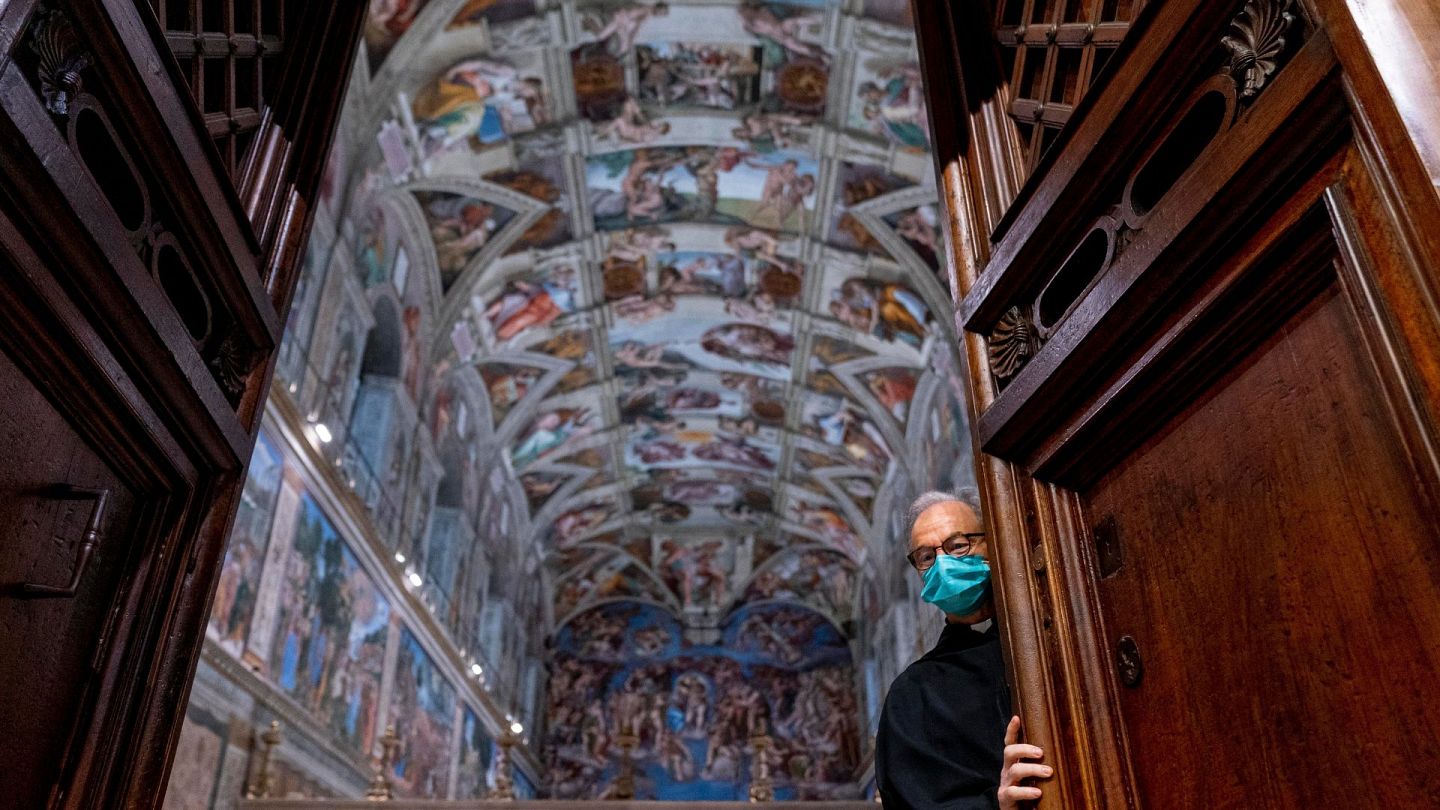Vatican closes Sistine Chapel ahead of papal conclave following Pope Francis’ death
After a nine-day mourning period, cardinals will gather to choose the next leader of the Catholic Church.
The Vatican has closed the Sistine Chapel as preparations begin for the conclave that will elect the next pope following the death of Pope Francis, who passed away on 21 April aged 88.The pope was laid to rest on Saturday after a funeral Mass in St Peter’s Square that drew world leaders and hundreds of thousands of mourners. A nine-day mourning period is now underway before the conclave can formally commence.Attention within the church is already turning towards preparing the Sistine Chapel for the cardinal electors who will assemble in the heart of the Vatican to choose the new leader of the 1.4 billion-follower Catholic Church.Among the key tasks is installing the chimney through which the traditional smoke signals — black or white — will announce the outcome of the votes.Visitors who managed to see the Sistine Chapel on Sunday considered themselves fortunate, given the uncertainty over how long the chapel will remain closed to the public."I think we felt very lucky to be able to be the last group of visitors to come in today," said Sumon Khan, a tourist from the US. "You know, our trip would not have been complete without seeing this beautiful place," he added.According to church law, the conclave may only begin after the nine-day mourning period, meaning the vote is expected to start between 5 and 10 May.When the time comes, the cardinals, dressed in red robes, will file solemnly into the chapel and participate in the secretive process said to be guided by the Holy Spirit. Their choice will indicate whether the church continues along the path of Pope Francis' reforms — with a focus on the poor, the environment and social justice — or reverts to a more doctrinally conservative direction similar to the papacies of Benedict XVI and earlier predecessors.The Sistine Chapel itself, filled with the masterpieces of Michelangelo and other Renaissance artists, will provide a backdrop for the proceedings. At the start of the conclave, cardinals will chant the Litany of Saints — a solemn Gregorian chant invoking the saints’ intercession — as they take their oath of secrecy. The chapel’s doors will then close, and the master of liturgy will declare "extra omnes" (everyone out), marking the start of the voting.The secrece of the conclave is intended to shield the election from external pressures.Black smoke rising from the chimney will indicate an inconclusive vote, while white smoke and the ringing of bells will confirm the election of the new pope.


